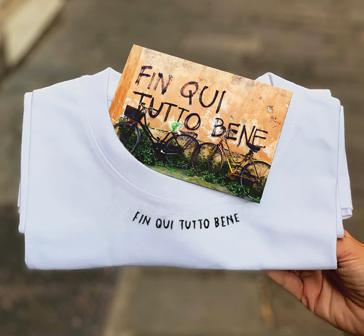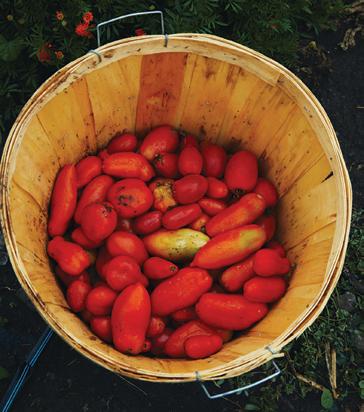
5 minute read
THE ARTISANS OF LIGURIA: A LEGACY OF LUXURY
from T Magazine No. 14
Today Liguria is a coastal tourist hub, famed for its diverse landscape, picturesque coastal villages and being the birthplace of pesto, but this region's artisans offer a window into an opulent history. Goldsmiths, master carpenters and those who work in silk, velvet and silver filigree make up some of Liguria's oldest craftsmen, many working to preserve their craft as automation becomes commonplace in modern production.
Genova, the capital city of Liguria has long been one of the most important ports in the region. The city, once ruled by a succession of noble families became a hub for wealthy merchants, navigators and visiting royalty. These aristocrats invested heavily in their homes, commissioning Baroque and Renaissance artists and architects to build their palaces. These Palazzo Rolli (Noble Palaces) have been designated World Heritage Sites for their architecture and decoration. Not to be outdone, various coastal towns, most notably Portofino, have been attracting the rich and royal for centuries, with castles dotting the countryside. With this in mind, it comes as no surprise that so many of Liguria’s Artisans are specialists in luxury goods.
SEDIE CHIAVARINE (CHIAVARI CHAIRS) BY FRATELLI LEVAGGI
Fratelli Levaggi has been handcrafting Chiavari chairs from their workshop in Genoa for three generations. In the workroom, senior carpenters work alongside the youngest, supporting their creativity and teaching them the expertise that has been handed down through the family. The craftsmen hand-make each chair with a focus on timeless design that defies style and fits easily into any interior.
Every step is done in-house - from felling the tree to the final painting. The wood - Beech, Cherry, Ash and Maple - is sourced in the Ligurian Apennines. Each piece of wood is then left to season for 2 to 5 years before being individually evaluated. Its grain and peculiarities are taken into account to ensure that the final design best exhibits its unique personality. Manufacture begins only after the wood is perfectly dry. The wood is first moulded with the help of manually controlled tools, then finished by hand to ensure perfection in every product. The chair’s woven seat is made by hand, using Indonesian rush which is assembled directly to the chair, adding to its distinct style and craftsmanship.
The first Chiavari chair was created by Giuseppe Gaetano Descalzi, a cabinet maker. It was immediately evident that the chair was unique: modern, minimal and light but structurally sound and robust. It was said that Descalzi threw the chair out a window to test itit bounced off the ground and did not break, showing the craftsmanship behind the item. Since then, it has been used at integral moments in history by figureheads such as Napoleon III, Francis I of Bourbon, and more recently at the White House during the famous meeting between Reagan and Gorbachev. To this day, this chair is still a classic piece of Italian design. levaggisedie.it


SILKS AND VELVETS BY TESSITURA GAGGIOLI (GAGGIOLI WEAVING)
By the 1500s the town of Zoagli (Genova), was known for its master silk and velvet weavers whose business boomed with maritime trade. Whilst hand-woven fabrics were driven nearly extinct by industrialisation, Tessitura Gaggioli under the direction of Giuseppe Gaggioli, Maestro d'Arte e Mestiere, continues to create some of the world’s most expensive fabric. The Gaggioli family workshop produces damask with a thread count of over 12,000/m, some of which are so complex they can only weave 30cm per day. The most intricate is “Soprarizzo velvet” which takes over 250 hand and foot movements to produce a single centimetre. These fabrics are made only on request. Alongside their 400-year-old handlooms, they have modified mechanical looms to produce fabric almost comparable to those made by hand. tessituragaggioli.it

SILVER FILIGREE BY EFFE-ERRE

Filigree is a technique of modelling silver wire, stemming from the Middle East in the 3rd Century B.C. The art spread to Italy in the late Roman period, flourishing during the Baroque years and returning to popularity in the 19th and 20th Centuries. Effe-Erre, located in Campo Ligure (Genova), blends the ancient art of hand-weaving silver with modern equipment to create intricate jewellery and items for religious worship. Today Effe-Erre is keeping filigree alive by combining traditional techniques with modern tastes. Their process is a scrupulous one, taking the pure silver through seven stages before it is ready to be worn. Religious articles remain a cornerstone of the business carrying on the tradition that first bought filigree to popularity. More recently, Effe-Erre was selected by Fendi to represent Liguria in a series of 20 bags to represent Italy’s regional artisans. Fendi’s Hand in Hand collection showcases a one-of-a-kind version of their iconic baguette bag created entirely from silver filigree. They were also chosen to create the trophies for the 72nd Sanremo Festival of Music (learn more on page 16). effe-erre.com
Vicosouvenir

Playing a role in the preservation of Ligurian craftsmanship is Vicosouvenir, which combines clothing (a nod to Liguria’s textile history) with clever takes on streetwear and souvenirs, many of which pay homage to the artisans who came before them. Its mission is to ‘tell Italy through design,’ creating useful, high-quality objects that reflect local tradition. Divided into collections, each tells a different story and focuses on a new concept such as ‘The Urbanist’ collection which takes inspiration from graffiti text and ‘Fru’, which utilizes typical seafaring materials from rope to water-resistant fabric, usually used in boating sails, to create stylish accessories. vicosouvenir.com

THE TASTE OF TRADITION:
Nick Sorbara and I were in our fifth week of night classes at the George Brown Culinary school when he decided that we should do a proper English Sunday roast at his place. I arrived at his house early on Sunday to get started. Nick always had a few things on the go, so I wasn’t surprised to see the stack of books piled high on his dining room table; a clear sign that he was gearing up for his next thing. Nick was deep in planning for the first Spring planting of a commercial organic garden at his family farm in Prince Edward County. The rest is a magical journey for this urban guy turned rural gardener.
The books covered everything from the economics of subsistence farming and the South Eastern Ontario microclimate to crop rotations and pesticide-free practices. He had begun hand-sketching the garden layout on sheets of taped together paper. Envelopes of seeds with pictures of every variety of vegetable were scattered about the room.
It was over a perfectly cooked roast with Yorkshire pudding that Nick shared his ideas and passion for what was ahead. He filled the room with promise. The establishment of a commercial organic farm would be no small feat, but my sense is that it was the challenge that got him excited in the first place. These are the people you want in your life, the ones that jump right in.
Since that Sunday night, almost four years ago, Nick and his wife, Claire, have sold their Toronto home and moved to the County. And in that time, Nick and his brother Lucas have firmly established Edwin County Farms as one of the notable organic growers in the region. I’ve often heard Terroni’s owner, Cosimo, talk of the importance of ‘materia prima’: that the foundation of anything delicious starts with the best ingredients. But what goes into growing the tastiest head of lettuce or the sweetest tomato? I’m convinced it’s more than healthy soil, fresh water and sun. Nick’s passion and heart are embodied in every facet of the farm. And thankfully for us, you can taste it in every bite. edwincountyfarms.ca
Edwin County Farms currently supplies a very impressive roster of restaurant clients in Prince Edward County, including The Royal, a year-round boutique hotel and spa recently launched in the heart of Prince Edward County.












